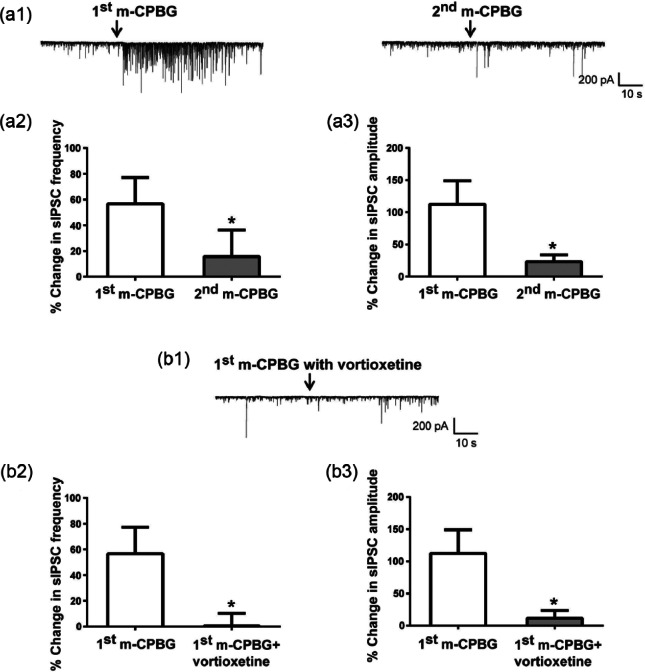Figure 4.
The serotonin (5-HT)3 receptor agonist m-chlorophenylbiguanide hydrochloride (m-CPBG) transiently increased spontaneous inhibitory post-synaptic currents (sIPSCs) and vortioxetine blocked the m-CPBG effect. (a1) Representative sIPSCs recorded from a CA1 pyramidal neuron in response to two applications of the 5-HT3 receptor agonist m-CPBG. In most of the responding cells, the effect of m-CPBG was not repeatable after various application intervals (compare right and left traces). (a2), (a3) The second application of m-CPBG did not induce the same increase in sIPSC frequency ((a2), *p=0.031, paired Student’s t-test) or amplitude ((a3), *p=0.024, paired Student’s t-test) as the first application. Bar graphs represent the mean±standard error of the mean (SEM) from 11 cells. Because of strong desensitization of m-CPBG responses, the effect of vortioxetine was tested in a separate set of cells. (b1) Representative sIPSCs recorded from a CA1 pyramidal neuron in response to m-CPBG in the presence of 20 µM vortioxetine. (b2), (b3) Pre-treatment with vortioxetine blocked the m-CPBG increase in sIPSC frequency ((b2), *p=0.034, unpaired Student’s t-test) and amplitude ((b3), *p=0.028, unpaired Student’s t-test). Frequency and amplitude were normalized to the mean value during the 30 s of recordings prior to 5-HT application. Bar graphs represent the mean±SEM from 11 cells for the m-CPBG only condition and from nine cells for the m-CPBG + vortioxetine condition.

